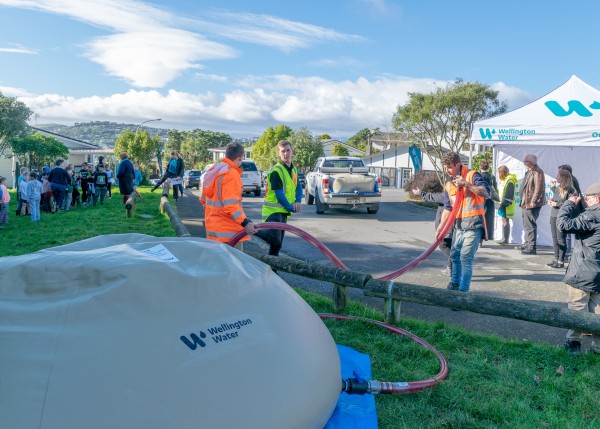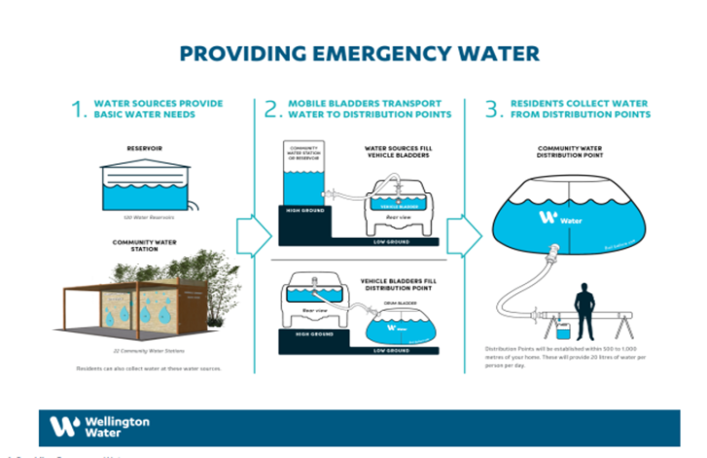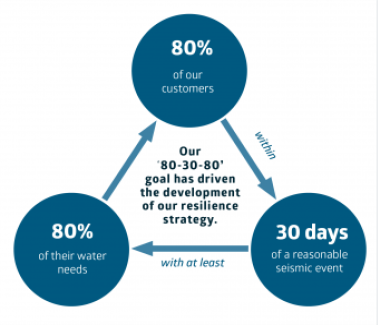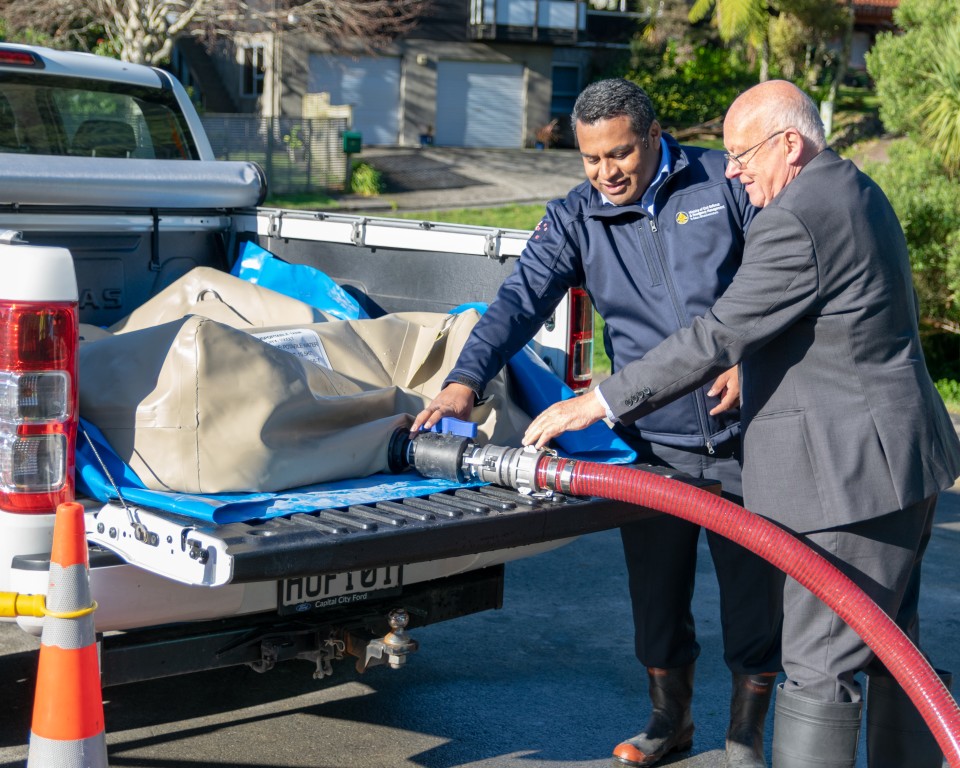Emergency water
The Wellington region is a great place to live, but the weather can get a little wild. Earthquakes, landslides, storms, and tsunamis are a constant threat. An unexpected event can create challenges accessing essential services like water.
A strong earthquake in the Wellington region could see some suburbs without water for 100 days and possibly longer.
Wellington Water, alongside regional and national emergency management agencies and our council owners, have plans in place for when the unexpected hits. But everyone has a role to play and we encourage residents to do the same – be prepared.
Here, you’ll find everything you need to know to make sure you, your whānau and community are prepared.
Getting Prepared
National Emergency Management Agency Advice

The National Emergency Management Agency (NEMA) official government website has great information and resources, with its Get Ready page. This contains plenty of advice for getting yourself, your workplace, marae, school and whānau prepared for an emergency. You’ll also find important information on how much emergency water to store, including different methods for storing water such as preparing your own containers of water, and the use of larger water storage tanks (for example, rain water tanks).
As a general rule, you want to make sure you have enough water stored away to provide everyone in your home 20 litres of water each, per day, to last 7 days. This is because it takes up to eight days following a major event to get our own people and other emergency service providers organised to safely establish the emergency supply network.
So for a family of four, that’s 560 litres of water!
The first seven days
The first seven days immediately after a major event is spent making sure that our people (and their whānau) are safe, before we get prepared and set up emergency water stations.
It may not be until day eight following a major event before the community water stations are activated, which is why we ask you to store enough water to provide 20 litres per person per day, to last seven days.
Emergency water network established

From eight days after a major event, the public emergency water network should be up and running. At this point, residents should be able to access safe, healthy drinking water via community water collection points dotted around the region. These are expected to provide a daily supply of 20 litres of treated water for every person.
There is a possibility that drinking water could be contaminated during the process of collecting and transporting water to people’s homes. In this scenario, it is likely that a boil water advisory notice will be issued to manage this risk.
How do we supply water in an emergency?

We typically supply water to these community water collection points using mobile ‘water bladders’ (basically water storage tanks). We source the water from existing reservoirs, or water treatment stations, and take them to each collection point in cars or other vehicles.
Every community collection point has the capacity to hold up to 5,000 litres.
We rely on 22 treatment stations across the Wellington metropolitan region (including bore and surface water treatment plants) and existing storage reservoirs to source water in an emergency situation. In South Wairarapa, we will rely on existing water infrastructure/treatment plants to source emergency water (additional water treatment stations are not currently available).
Each water collection point and water station is strategically located in clusters, or ‘islands’. This is because there’s a possibility that the Wellington region could split into 17 or more separate areas due to access issues caused by landslides and slips etc.

Wellington Water will work closely alongside the Wellington Region Emergency Management office (WREMO), councils and the National Emergency management Agency (NEMA) to co-ordinate and manage the distribution of emergency water.
Our social media channels - Facebook, Twitter and Instagram - as well as our website will be updated with the latest information and advice during an emergency. This will include where residents can access emergency water supplies.
Click here to view the full list and street locations of all water stations in Wellington.
Below are the guidelines for Council’s Emergency Operations personal and supporting volunteers for setting up the above ground emergency water distribution network.
Click here to view a guide of How to transport a 1,000 litre emergency water bladder
Click here to view a guide of How to set up and operate a water collection point.
Building Network Resilience

We have a long-term strategy to build water network resilience, called ‘Towards 80-30-80’. The ultimate goal of this strategy is to provide 80 per cent of customers, within 30 days of a reasonable seismic event, with 80 per cent of their normal water needs.
In the meantime, we need to be prepared for an unexpected event now. A couple of examples of building network resilience include the successful completion of the Omāroro Reservoir in 2022, the Waiohine Treated Water Reservoir in the South Wairarapa, and the Silverstream bridge bulk water supply pipeline replacement project.
These investments significantly improve the resilience of the water supply networks, and gradually decrease the expected outage period prior to restoration of supply.

